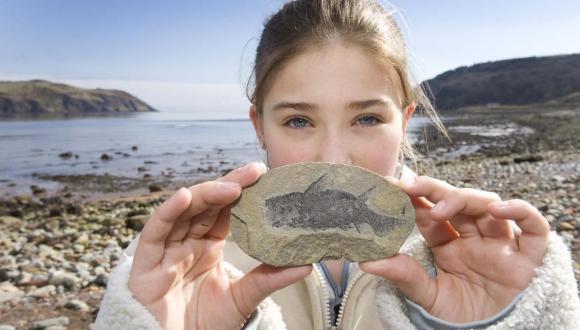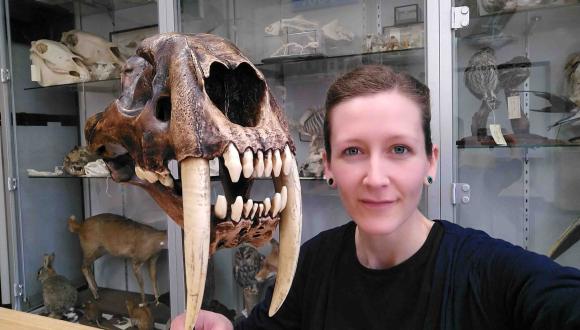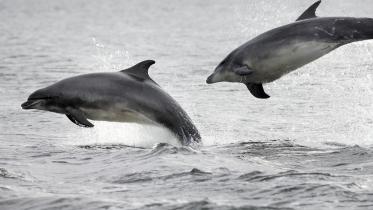Scottish Fossil Code and Guidance
Guidance for fossil collectors, and the owners of fossil localities, on the responsible collection and care of Scotland’s fossil heritage.
Published: August 2023
Ministerial Foreward for the Scottish Fossil Code

Scotland’s nature is defined as including biodiversity, geodiversity and the natural elements of our landscapes and seascapes. Our fossil resources, some of which date back well over a billion years, can be thought of as our ancient nature providing glimpses into past environments, their plants, and the lives lived by the animals of times long gone. The extraordinary fossil heritage tells the story of evolution – how life evolved and adapted to changing environmental conditions and how ecosystems grew, responded or disappeared. Today, our understanding of what the fossil heritage has to tell us can help us anticipate how life will change and adapt as we face the twin challenges of climate change and biodiversity loss.
Scotland is the home to a remarkable and diverse fossil heritage. One of the jewels in the crown are 407 million year old fossil remains of the world’s oldest known complete terrestrial wetland ecosystem at Rhynie in Aberdeenshire. Perfect preservation of the Rhynie plants and early animals, to the cellular level, allow us for example to learn about the adaptation of plants to high atmospheric levels of CO2. Another globally important asset is the Middle Jurassic vertebrate fossils of Skye, that are incredibly rare elsewhere in the world, and help inform thinking on the evolution of our mammal ancestors and iconic dinosaurs.
As the fossil heritage is vulnerable to abuse and damage, such nationally and internationally important sites have statutory protection. The Skye Nature Conservation Order (2019) provides additional protection for globally important fossil localities on Skye. However, additional approaches are required to ensure that our fossil heritage, wherever it occurs, including fossil collections, is safeguarded and managed appropriately to ensure its survival for future generations. Hence, provision for Scottish Natural Heritage (now known as NatureScot) to prepare the Scottish Fossil Code is included in the Nature Conservation (Scotland) Act 2004. The Code, which was first published in 2008, aims to provide guidance for those who have an involvement in the owning, collection and care of Scottish fossils.
The Code recognises the challenges faced in the conservation management of our globally significant fossil resource to ensure its continuing and sustainable use for scientific, educational and recreational purposes. The Code applies to all those with an interest in fossils, whatever it may be. From owners of fossil localities, to collectors for research or recreational purposes, to those with a commercial interest, and to everyone who promotes and celebrates our fossil heritage. The Code encourages all of these groups to have a role looking after Scotland’s fossil heritage and chimes with Scotland’s Geodiversity Charter, which encourages the wise management and promotion of Scotland’s globally important geodiversity.
The Code, revised to adopt a more pragmatic and impactful approach, may be thought of as a ‘can-do’ document. I hope it will encourage the responsible utilisation and enjoyment of Scotland’s fossil heritage. The Code’s guidance should empower continuation of the Scottish amateur fossil collector tradition which includes in its roll call famous 19th century collectors such as Hugh Miller and lesser known but important collectors including Elizabeth Gray, who made a substantial contribution to palaeontological research in the 20th century. Much remains to be discovered both in terms of actual fossil finds and interpretation of what they can inform us about our journey from the past into the future. The Code will not only encourage and enable responsible discovery it will lead to enhanced public interest in the fossil heritage of Scotland for generations to come.
I celebrate the re-publication of the Scottish Fossil Code and hope that it will continue to encourage responsible utilisation of a world-class resource that is an intrinsic part of Scotland’s nature. I encourage everyone with an interest in fossils to support the guidance it contains.

Lorna Slater MSP
Minister for Green Skills, Circular Economy and Biodiversity
Scottish Government
Introducing the Scottish Fossil Code and Guidance
Scotland is recognised in the global context for its rich, diverse and highly significant fossil heritage. This geological aspect of Scotland’s nature is our record of past life and environments on planet Earth and it helps us to understand the rapidly changing world that we live in today. New fossil finds are constantly being made in Scotland that help to fill the gaps in our understanding of the evolution of life on Earth.
Scotland’s fossil heritage is an irreplaceable and non-renewable resource that has been millions of years in the making. Consequently, if not properly looked after and managed, aspects of it may be susceptible to damage and destruction through factors including irresponsible collecting and the neglect of collected specimens. In recognition of this the Nature Conservation (Scotland) Act 2004 required Scottish Natural Heritage, now known as NatureScot, to prepare the Scottish Fossil Code (pdf available for download below). The requirement acknowledges the value and vulnerability of Scotland’s fossil heritage and that legislative measures alone cannot entirely safeguard it.
The Code provides essential information on the nature of Scotland’s fossil heritage and the need for its appropriate management and safeguard. It is aimed at everyone with an interest and involvement in the fossil heritage and outlines the roles and responsibilities of those that own and utilise palaeontological resources. It therefore applies to owners and managers of fossil localities and those that collect, study and curate fossils including palaeontological research scientists, recreational collectors and those with a commercial interest.
The Code recognises that seeking out and collecting fossils is an essential activity providing the raw material and data for the science of palaeontology as well as being an educational and recreational hobby. It therefore provides information, advice and best practice recommendations concerning the responsible collection of fossil specimens in Scotland, irrespective of where they occur, with the objective of ensuring that collecting is undertaken responsibly within the law. Just as importantly the Code also provides information and best practice recommendations in the identification, conservation, acquisition, sale, careful storage and donation of specimens. In doing so it aims to ensure that Scotland’s fossil-bearing resources and collections are managed in such a way that they will be useful to future generations. As well as benefiting Scotland’s fossils, both in collections and that still await discovery, it is hoped that the Scottish Fossil Code (pdf available for download below) will enhance public interest and awareness of Scotland’s fossil heritage.
Scottish Fossil Code Guidance
- Legal status of the Scottish Fossil Code and adherence expectations
- Scottish Fossil Code - Guidance for Collectors
- Scottish Fossil Code - Guidance for land owners and land managers
- Scottish Fossil Code - Guidance for those that promote awareness of the fossil heritage
- Scottish Fossil Code - Guidance for young collectors, teachers and families
- Essentials of the Scottish Fossil Code
- What to do in the event of encountering people collecting irresponsibly
- Scottish Fossil Code - Further information
- Contact
- The Scottish Fossil Code
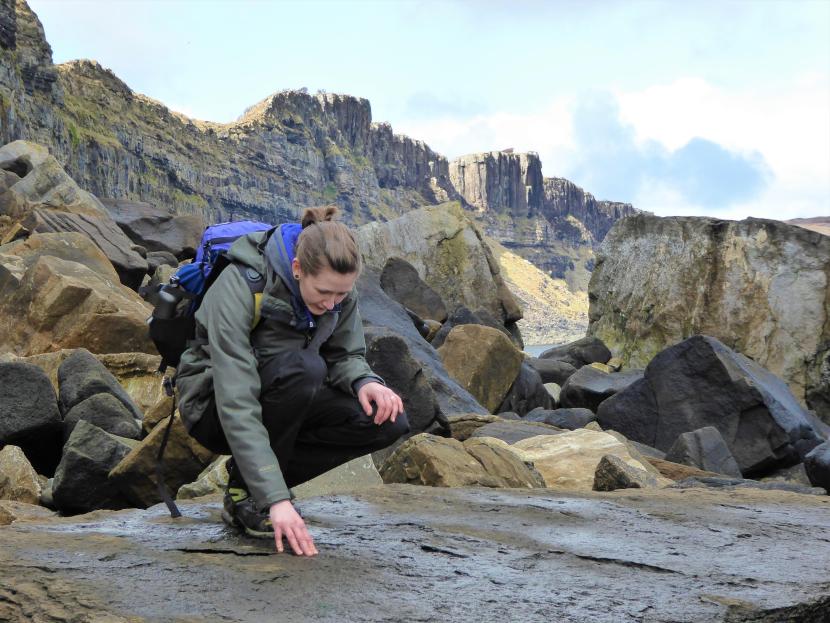
1. Legal status of the Scottish Fossil Code and adherence expectations
Although established by statute the Scottish Fossil Code itself is non-statutory. The Code is, therefore, not a law and so the best practice recommendations concerning the collecting and care of fossils is not mandatory. However, the Code provides important information on the legalities of ownership, and the regulations concerning protected fossil localities, which should be taken into consideration if fossil collecting in Scotland.
Whilst setting out the precise legal obligations, the Code aims to be fair and balance the objectives of helping prevent damage to fossil localities and resources whilst not impeding generally harmless and responsible fossil collecting. In this respect, the Code recognises that seeking out details of land and mineral right ownership may be beyond the resources of otherwise responsible and minor-scale collectors.
The Code’s pragmatic approach means that judgement and proportionality are important when considering the legal obligations and best practice recommendations. There is an expectation that professional research scientists, recreational collectors with an interest in research, and commercial collectors, attain and adhere to the highest standards concerning the collecting and care of fossil specimens in Scotland.
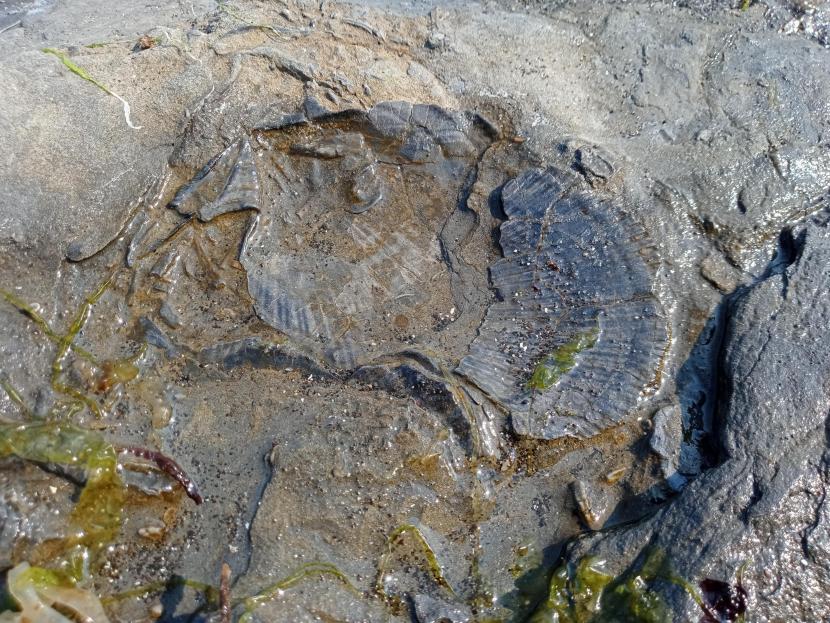
The eroded remains of a Lower Jurassic pectinid mollusc shell on the intertidal platform at Carsaig Bay in the South Mull Coast SSSI.
2. Scottish Fossil Code - Guidance for Collectors
The collection of fossils in Scotland for science, education and recreation comes with responsibilities. Whatever your motivation, for collecting and retaining fossil specimens in Scotland, the Scottish Fossil Code (pdf available for download below) applies to you. The Scottish Fossil Code - Guidance for Collectors serves as a summary of the best practice recommendations set out in the Code and should to be read and understood before collecting. The full Scottish Fossil Code (pdf available for download below) should be referred to for supporting information if required.
It is hoped that following the Guidance for Collectors will lead to the responsible collection and care of fossil specimens by whoever is doing so. Following the guidance should help develop responsible recreational fossil collecting and increase the enjoyment and satisfaction that can be gained from finding, observing and collecting fossils in Scotland.
Knowing about fossils and where they are found
Fossils are ‘the remains of, or traces made by, an ancient animal, plant or other organism preserved in rock’. Nearly half of Scotland’s land surface of is underlain by sedimentary rock and it is in these rocks that Scotland’s fossil heritage is generally found. There are many fossiliferous localities in Scotland and descriptions of these may be given in geological field guides and other publications. Information is also available through websites and museums. Collecting fossils offers an opportunity to learn more about past life on Earth as well as discovering more about Scotland’s geology. The Code says:
- “Those interested in fossils, and fossil collecting, are encouraged to learn about the fossil heritage, and to visit museums to see actual fossil specimens.”
The various approaches to collecting fossils
It is important to be familiar with the various approaches to collecting and levels at which it is undertaken. This reflects the various interests in Scotland’s fossils and the purpose of those involved in collecting. Approaches to collecting can involve finding and observing fossils without removing them to the actual removal of specimens which can range from casual and minor to significant and large-scale collecting [see section 3.2 of the Code]. If you are able to describe the purpose and level of your collecting then that can be helpful in any dialogue with landowners, land managers and others when you are either collecting or proposing to collect at a fossil locality. The Code says:
- “Finding fossils to observe, appreciate or record them is an alternative approach to collecting and removing them from a fossil locality.”
- “Given the variety of approaches to fossil collecting, it may be useful to be able to describe the purpose and level of your own collecting as this could be helpful in any dialogue you may have with landowners and others.”
Fossil ownership, accessing fossil localities and permission to collect
The fossil heritage of Scotland, like any other aspect of our natural and cultural heritage, is owned and managed property some of which, given its national or global importance, has statutory protection. Visiting fossil localities in the countryside to see and collect fossils involves accessing land owned by an individual or an organisation. Under the Land Reform (Scotland) Act 2003, everyone has access rights over most land and inland water in Scotland, for recreational purposes, some educational and commercial purposes, and for crossing from place to place. However, access rights come with responsibilities and are conditional on those taking access doing so responsibly. Having the right to take access over land does not mean that people have the right to extract or remove fossils.
On access. The Code says:
- “The Scottish Outdoor Access Code should be consulted prior to accessing land to view or collect fossils.”
- “Accessing locations such as working quarries and mines, building or civil engineering sites, and railway and motorway cuttings requires appropriate authority.”
On seeking permission to collect. The Code says:
- “Traditionally common fossils and small geological specimens are collected without permission and hindrance. However, lawfully the right thing to do is to obtain permission to extract, collect and retain fossils.”
Fossil localities that are protected as Sites of Special Scientific Interest (SSSI) and situations where collecting is either not recommended or allowed
Many scientifically important fossiliferous localities around Scotland have statutory protection as SSSI. Fossil collecting, particularly loose fossils, is possible at the majority of protected palaeontological and geological sites. However, consent is required from NatureScot to collect fossils from bedrock and in some instances consent may also be required to collect loose fossils. Undertaking the consent process will require dialogue with the owner of the SSSI. It is important to be careful and not commit an offence by recklessly damaging the natural features of an SSSI. To do so, even unintentionally, constitutes a ‘Wildlife Crime’. The Code says:
- “Collectors should be familiar with any collecting regulations that may be in place before visiting SSSIs. If they don’t know, they should ask.”
- “Collectors should be aware that in SSSIs collecting from bedrock, and in some rare cases loose rock and fossils, may involve requesting land owners to approach NatureScot to secure SSSI consent on their behalf.”
- “If collectors are in doubt about collecting regulations at an SSSI then they should not collect.”
If collecting on the Isle of Skye. The Code says:
- “A Nature Conservation Order (NCO) affords extra statutory protection at fossil localities on Skye.”
Fossil collecting and Local Geodiversity Sites. The Code says:
- “Fossil collecting at non-statutory protected Local Geodiversity Sites may not be encouraged. If there is doubt the local geoconservation group could offer advice.”
Fossil collecting and the built environment. The Code says:
- “On no account should fossils be collected from stone in dry-stone dykes, walls or buildings.”
Signage at fossil localities
The fossil-bearing rock resource in some localities can be very limited and regarded as finite. Similarly the fossils in particular localities may be incredibly rare and of considerable scientific value. Consequently, such sites are vulnerable to fossil collecting which may be actively discouraged through use of signage. The Code says:
- “Signage regulating collecting at fossil locations must be adhered to.”
- “The absence of signage, prohibiting collecting, at fossil localities does not imply a right, freedom, or permission to collect.”
Equipment usage in fossil collecting
Since many good fossil specimens can be found by looking through loose rock, the use of equipment such as hammers and chisels is not necessarily required. Hammering or chiselling bedrock in a SSSI, without securing consent from NatureScot, risks recklessly damaging the site. The use of mechanical equipment such as drills, mechanical excavators and tools, to extract fossils from outcrops is generally not regarded as a sustainable and responsible activity. The Code says:
- “It is not always necessary to use a hammer and chisel to find fossils.”
- “Do not hammer exposed bedrock, if it is a protected geological feature, or clear vegetation to expose bedrock, within an SSSI, without first obtaining consent.”
- “Apart from trimming specimens, the use of mechanical equipment to extract and remove fossils should only occur for the purposes of palaeontological research projects (for example by museums and universities) and then only when essential.”
How many fossils to take and their careful removal
Fossils are a limited resource and should not be taken without good cause. Even incomplete specimens have scientific and educational value. Efforts to reduce the size of the fossiliferous rock sample, for ease of carrying and transport, risks damaging or destroying fossils. Whatever state they are in, complete or otherwise, secure packaging of specimens will help prevent damage during transport. Broken specimens may be carefully repaired. The Code says:
- “Do not over-collect by taking many examples of the same fossil.”
- “Ensure that you leave material that you do not want at the locality for others to find.”
- “You should not attempt to reduce the size of a rock sample containing a fossil without the appropriate equipment.”
- “Incomplete specimens may be worth retaining and broken specimens may be carefully repaired.”
- “Fossil specimens should be packaged carefully for carrying and transport.”
Respecting wildlife and a fossil locality’s other users
Fossil collecting activity can impact negatively on a locality’s biodiversity affecting plants, animals and habitats. Nesting season is one of a range of factors to consider before visiting a fossil locality. Rock debris left scattered about pasture and on footpaths may present a hazard and lead to injury of other fossil collectors and farm animals. The Code says:
- “Always take proper account of wildlife and other aspects of the natural heritage by following the guidance in the Scottish Outdoor Access Code.”
- “Leave fossil localities in a tidy condition that does not present a hazard to animals, vehicles and other collectors.”
- “Never discard fossil material and associated rock collected from one fossil locality at a different location.”
Recording fossil finds
When a fossil is removed from bedrock, and the locality in which it is found, it is important to record basic information in order that the specimen is of use to science. The Code says:
- “When you collect a loose fossil take a note of where it was found.”
- “If you remove a fossil from bedrock, record the precise locality, and the position it was found in the rock sequence.”
Reporting exceptional and unusual finds
It is best to report and seek expert advice if you find what could be an unusual or exceptional fossil. Attempting to remove the specimen could damage what could be a scientifically important find, which in some cases may already be known about. The Code says:
- “If you discover an exceptional, large, unfamiliar or unusual fossil seek expert advice and report your find.”
- “Do not attempt to extract part of a fossil specimen as this will damage it, and reduce its scientific value.”
Identifying your fossil finds
Identification of your fossil finds is an important part of collecting. The Code says:
- “Try to identify the specimens you have found using reference books, online resources and seek expert help if required.”
Caring for the fossils that you collect
Collected fossils, or fossil-bearing rock, require careful and appropriate cleaning that does not cause damage. Specimens may also require preparation, which is the act of removing rocky matrix surrounding fossils, enabling their use in palaeontological research or for exhibition purposes. You may have to seek expert advice to ensure the appropriate cleaning and preparation of specimens or fixing together the component parts of a broken fossil specimen. The Code says:
- “Take good care of collected fossils and the information that you have recorded about your finds.”
- “Fossil material should be cleaned and prepared for storage and display as soon as possible after collection.”
- “If you are in doubt about the techniques and lack the necessary equipment to clean and prepare a fossil specimen, consult publications on palaeontological preparation techniques and seek expert help before attempting to work on it.”
- “Varnish should not be used to ‘improve’ the look of fossil specimens.“
- “Use reversible glues if fixing fossil specimens.”
Labelling, documenting and storing fossils
Basic information recorded when a fossil specimen is collected, such as where and when found, should be carefully transferred and included on an accompanying label. Fossils should then be stored or displayed in secure dustproof conditions and protected from rolling around and abrading. It is also important to maintain reasonably stable temperature and to avoid excessively high or low humidity to avoid potential specimen degradation. The Code says:
- “Collected specimens should be labelled.”
- “The storage and display environment for your fossils should not damage, or cause deterioration to, the specimens.”
- “An important fossil collection should enjoy an appropriate level of physical security.”
Selling and buying Scottish fossil specimens
There is a market for the sale and purchase of fossil specimens collected in Scotland. The Code says:
- “Having ownership title to a fossil means it may be sold lawfully.”
- “Those intending to export Scottish fossils from the UK should check the current situation regarding export legislation.”
- “If purchasing a fossil specimen it is recommended that purchasers use a reputable dealer.”
- “Purchasers should satisfy themselves that a fossil for sale is genuine and has been properly prepared.”
- “Assurance should be sought that a fossil for sale has been collected legally, that the seller has legal title to sell it and that they are prepared to provide the specimen’s locality details.”
When dealing with, or disposing of, an old collection
Old fossil collections are an important part of Scotland’s fossil heritage. Although neglected, disordered, and perhaps badly stored in damaging environmental conditions, they may contain specimens that are rare, and perhaps no longer collectable. They may also be of interest and significance because of their history and personal connections. Special care is therefore required to sort out, assess and reorganise an old collection which may turn out to have scientific and educational value. The Code says:
- “Seek expert advice when dealing with an old and perhaps neglected fossil collection.”
- “When disposing of an old collection seek advice and consider donating it to a museum or educational establishment.”
Donating or bequeathing a collection or individual specimens
If you are the owner of a scientifically significant individual fossil find, or a collection of fossils, thought should therefore be given to the long-term future of the material. You could consider donation for the public benefit or have instructions left in your Will. Whatever the circumstances for donation, you should choose an accredited museum (which may be operated by national or local government, a charitable trust, or a university) or the British Geological Survey. The Code says:
- “It is good practice to donate scientifically important specimens to an accredited museum.”
- “If you are considering donating a fossil, or collection, to a museum you should choose one that is accredited and perhaps close to where the fossil or most of the collection was found.”
- “If you are the owner of an important fossil collection, thought should be given to its long-term future with instructions left in your Will.”
If encountering people collecting irresponsibly
If you come across a situation where you suspect that irresponsible collecting is taking place which is damaging a fossil locality, with fossil material being removed illegally, you may choose to react. The Code says:
- “If you encounter what you consider to be irresponsible collecting, use your common sense and do not put yourself at risk by intervening. Try to inform the land manager and, if the location is an SSSI, report the incident to the police and NatureScot as a ‘Wildlife Crime’.”
b. Commercial collectors and dealers
c. Professional palaeontological researchers
d. Collectors from outside Scotland
a. Recreational collectors interested in research
If you are a recreational collector of fossils in Scotland interested in research please collect and care for specimens responsibly. Follow the Scottish Fossil Code - Guidance for Collectors and the additional guidance below. Supporting information can be found in the full Scottish Fossil Code (pdf available for download below).
Additional specific guidance for recreational collectors interested in research:
Being a recreational collector interested in research the Code highlights the importance of working with other collectors and sharing your knowledge gained through collecting. There may be organised clubs, including those online, that cater for fossil collectors and so it is useful to engage with others that have similar interests to discuss and appreciate finds. You may wish to organise visits with others to fossil localities and display your collection at educational events. There you will have the opportunity to encourage others to take an interest in fossils, local geology, and responsible collecting. The Code says:
- “You could share your fossil collecting knowledge and news of finds with other collectors, arrange visits to fossil localities, show your collection to others and encourage others to take an interest in Scotland’s fossil heritage and responsible collecting.”
There is long tradition of recreational fossil collecting in Scotland dating back two centuries. Today geology remains accessible to all providing a great opportunity for highly informed recreational collectors to continue to make significant contributions to palaeontological research. As a recreational collector interested in research you may have the opportunity to work on and research a particular fossil locality or area of special interest. In time, you may develop considerable knowledge of this special interest, contributing new information or highlighting gaps in existing research. The Code says:
- “If you undertake palaeontological research, consider working in collaboration with a professional palaeontologist.”
b. Commercial collectors and dealers
If you are a commercial collector or dealer operating in Scotland please ensure your activities are undertaken responsibly. Follow the Scottish Fossil Code - Guidance for Collectors and the additional guidance below. Supporting information can be found in the full Scottish Fossil Code (pdf available for download below).
Additional specific guidance for commercial collectors and dealers:
The Code highlights the need to identify new locations for collecting rather than concentrating efforts in protected sites. Your attention is drawn to the need for required permissions to undertake large excavations and the benefits of involving researchers in co-operative partnerships at newly discovered localities. Be aware that new fossiliferous sections, revealed during your work, may merit permanent retention and conservation for the purposes of science and education. The Code says:
- “You must agree terms for the commercial exploitation of a fossil locality with the owners and their representatives.”
- “In partnership with others you should consider the permanent retention of a new exposure.”
The commercial exploitation of fossil localities should be well planned and undertaken responsibly and systematically. This should entail the keeping of accurate records including fossil specimens found and fossil horizon exploited that could be useful in later scientific research. The Code says:
- “Documentation including locality information should accompany specimens that are marketed.”
Given the scale and frequency of commercial collecting, it is almost inevitable that fossils invaluable for the advancement of palaeontological science will be found. Such scientifically important fossils ought to be secured within an accredited museum’s collection where they are available for research purposes. There may be some fossil locations where access and collecting permission is given on condition that scientifically important specimens will, in the first instance, be offered to museums. The Code says:
- "You should offer finds of exceptional fossils to an accredited local or national museum in Scotland for donation or possible purchase on the nation's behalf, before considering other museums and the open market."
Commercial collectors will require the owner of the fossils (typically the owner of the mineral rights to the land on which the fossils are collected) to transfer ownership of any fossils found before the collector can lawfully sell them. The Code says:
- "Lawful sale of collected fossils requires ownership transfer typically from the mineral rights owner."
c. Professional palaeontological researchers
If you are a palaeontologist undertaking collecting fossils for research purposes in Scotland please do so responsibly and follow the Scottish Fossil Code - Guidance for Collectors and the additional guidance below. Supporting information can be found in the full Scottish Fossil Code (pdf available for download below).
Additional specific guidance for palaeontological researchers:
Palaeontological researchers have a duty to collect responsibly to ensure the sustainable use of fossil-bearing resources and the continuation of future research. Effort should be made to maximise use of fossils already held in existing collections and minimise future researchers’ resampling a location’s diminishing resource. This is particularly the case for localities with ‘finite’ fossil resources. The Code says:
- “Maximum use must be made of fossils already held in existing collections, using only curated material for research that is to be published.”
- “You should strive to minimise the quantity of material removed and the amount of damage undertaken at a fossil locality.”
- “Research collecting from particularly limited fossil-bearing resources should be multidisciplinary.”
You should also contribute to the conservation of the fossil resource, through detailed fossil provenance recording and curating the material you collect. You also have a responsibility to ensure that rock faces are not disfigured with core holes and permanently engraved or painted numbers or symbols. Effort should also be made to make good areas of rock face or loose blocks where fossil sampling and excavation work has taken place. The Code says:
- “Collected research material should be curated in a museum or British Geological Survey collection.”
- “The Geologists' Association's Geological Fieldwork Code should be adhered to.”
You should be aware that the institution, you are associated with, may be considered a public body. This has implications for collecting in SSSI and the associated consents process. Researchers in this situation are required to secure consent directly from NatureScot but also seek permission from the landowner to collect and remove fossils. The Code says:
- "University or museum researchers approaching NatureScot for SSSI consent to collect and remove fossils require landowner permission as well."
d. Collectors from outside Scotland
If you are a fossil collector visiting Scotland and collecting fossils for recreational, research, commercial or other purposes you must do so responsibly. Follow the Scottish Fossil Code - Guidance for Collectors and the additional guidance below. Supporting information can be found in the full Scottish Fossil Code (pdf available for download below).
Additional guidance for collectors from outside Scotland:
Fossil collectors from outside Scotland must be aware of the legalities of fossil resource ownership, and the SSSI system of palaeontological resource management, when planning and undertaking collecting visits to Scotland. The Code says:
- “Collectors from outside Scotland have a responsibility to collect fossils in accordance with Scottish law.”
3. Scottish Fossil Code - Guidance for land owners and land managers
Fossil locality owners and managers have an important role in the management of Scotland’s fossil heritage including its sustainable utilisation and conservation. If you own or manage a fossil locality this guidance for land owners and land managers applies to you and you are invited to be familiar with the Scottish Fossil Code (pdf available for download below).
In the Code you will find information about fossils, including what they are, their importance to science and education, and the threats facing this irreplaceable aspect of Scotland’s nature. The Code outlines in some depth the issue of fossil collecting including the various approaches to it and the need to encourage the appropriate and sustainable usage of fossil localities and the fossils found there. If your fossil locality has statutory protection as an SSSI it is important that due process is followed.
Finding out about and conserving your fossil resource
As an owner or land manager of a fossil locality, you are encouraged to find out about the fossils such as how they are preserved, in what rock layers they occur, their age and rarity. Having this insight will help in understanding how the fossil resource may best be managed to ensure its long term sustainable utilisation. The Code says:
- “You are encouraged to find out about the fossil-bearing resource on your land and to conserve it through appropriate management.”
Fossil collecting on your land
Conservation and use of a fossil resource includes ensuring that loose fossils are safeguarded through encouraging responsible collecting without hindrance. This approach is preferable to letting them be damaged and destroyed through natural weathering and erosion. The Code says:
- “You are encouraged to show sympathy to the interests of collectors.”
The various approaches to fossil collecting
When considering fossil collecting on your land it is useful to be aware of the different approaches and motivation for collecting fossils, and associated levels of collecting, as defined by the Code [see section 3.2 of the Code]. In most cases the people interested in collecting fossils from your land will be recreational collectors and young people collecting on a casual or minor-scale. The fossils may also be of interest to research scientists. If the fossils on your land are particularly sought after commodities then they could be a focus for commercial exploitation. The Code says:
- “Be aware that there are a variety of approaches to fossil collecting and also the levels at which it is undertaken.”
Collectors seeking permission to collect
Be aware that collectors may not know who to approach beforehand to seek access and collecting permission. Although they may not have sought permission the activities of most collectors are likely to be generally responsible. However, vigilance is required to ensure that collectors, whatever their motivation is, adhere to the Code. The Code says:
- “Be aware that collectors may not know who to request permission from to collect fossils.”
- “If collectors are encountered, who are in ignorance of the Scottish Fossil Code (pdf available for download below), then you should bring it to their attention.”
Irresponsible collecting
You may come across or find signs of significant or large-scale collecting at your fossil locality. If this occurs where you have not given permission and judge that the collecting has been irresponsible, damaging your property, you may wish to take appropriate action. What you may decide to do could depend on whether or not damaging irresponsible collecting is an isolated incident or there are repeated instances. You may have to consider if numerous members of the public, or particular individuals, are involved. The Code says:
- "You may wish to take appropriate action if you suspect that irresponsible collecting activity has damaged a fossil locality on your land."
Erecting signage that discourages collecting is one way that could help prevent future instances of damage to your fossil locality.
If your fossil locality is a SSSI
As an owner or manager of a SSSI you will be aware of the requirement to obtain consent from NatureScot before carrying out or permitting operations likely to damage protected features. The Code says:
- "Owners and managers must obtain consent from NatureScot before carrying out or permitting operations likely to damage protected features."
It is important to recognise that operations likely to damage protected features may include some fossil collecting activities undertaken by visiting collectors. In addition, SSSI status has an important bearing on the character of the fossil collecting activity permissible. The Code says:
- “Owners and managers of fossil localities should be aware that some fossil collecting activities within SSSI, particularly the extraction of fossils from bedrock undertaken by visiting collectors, requires them to seek consent from NatureScot.”
- “It is recommended that your response to those seeking permission to collect fossils from your land, and those encountered on your land that have not sought permission, should depend on the purpose and level of the collecting and the consent process for the SSSI.”
Irresponsible collecting can damage fossil resources and those undertaking it could be committing the offence of 'reckless damage’ to the SSSI. Depending on the nature of the fossil resource reckless damage usually encompasses activities such as the unconsented excavation of fossil-bearing rock and, or else, the large-scale collection of specimens. In some fossil localities the removal of even loose specimens may constitute reckless damage. Therefore, it is important to understand the nature of the fossil resource and to be able to appreciate what could constitute damage. The Code says:
- "Be aware that irresponsible collecting can damage a fossil resource and constitute the offence of ‘reckless damage’ to an SSSI."
- “You should contact the police if you suspect that irresponsible collecting activity has damaged the SSSI.”
Additional specific guidance for quarry operators, managers and developers
If you are a quarry operator, manager or developer, that is a recognised fossil locality, please be aware that the fossil resource may yield fossils of scientific importance and may also may attract the attention of fossil collectors. The Scottish Fossil Code (pdf available for download below) provides best practice recommendations in handling collector aspirations and fossil conservation aspects of your operation both during and following resource extraction. The Code says:
- “Any unusual or rare fossils uncovered during quarrying should be set aside and experts in palaeontology alerted to enable their study and collection.”
4. Scottish Fossil Code - Guidance for those that promote awareness of the fossil heritage
The geological and palaeontological heritage of Scotland is justifiably celebrated and promoted having significant educational, awareness-raising and tourism value. Books and Internet sites and pages highlight aspects of this heritage with some having a national, regional or locality-based focus. Interpretative panels and leaflets at fossil localities highlight important finds and their geological context. Local community effort can extend to setting up and maintain a display of fossils in a public building. Fossil localities that become particularly well-known and accessible are the subject of large group visitation for educational and tourism purposes. However, celebrating and promoting the fossil heritage comes with responsibility to ensure that information or advice provided does not give rise to irresponsible collecting and collector pressure on vulnerable fossil localities.
b. Interpreters of the fossil heritage and authors of guides and other publications aimed at the general public
c. Leaders of field parties for education or tourism
d. Those wishing to set up a local museum or permanent display
a. Operators of websites that promote fossil localities and fossil collecting
If you are the operator of a website that promotes the palaeontological heritage of Scotland and fossil collecting, please do so responsibly. Every effort should be made to ensure information supplied is accurate and does not encourage damaging exploitation of fossil localities. You may wish to carry a link to the Scottish Fossil Code - Guidance for Collectors and the full Scottish Fossil Code (pdf available for download below). The Code says:
- “Websites that promote fossil locations in Scotland should encourage responsible collecting, request adherence to the Scottish Fossil Code (pdf available for download below) and carry a link to the Code on NatureScot’s website.”
b. Interpreters of the fossil heritage and authors of guides and other publications aimed at the general public
If you prepare guidebooks, leaflets or interpretative panels that concern an established fossil locality, or where fossils are likely to be found, effort should be made to ensure information supplied is accurate and does not encourage damaging exploitation of the fossil heritage. This could include reference to the Scottish Fossil Code - Guidance for Collectors and the full Scottish Fossil Code (pdf available for download below).
Similarly the authors of publications that have either a palaeontological subject matter and association, or mention fossils or fossil localities in the wider national context, could make reference to the Code. This is particularly the case if there is encouragement for readers to visit fossil localities. The Code says:
- “Efforts to raise awareness and promote the palaeontological heritage, or aspects of it, either locally or nationally, in publications and any interpretative products such as panels and leaflets, should make reference to the Scottish Fossil Code (pdf available for download below).”
c. Leaders of field parties for education or tourism
Fossil localities in Scotland can be important for educational and tourism purposes attracting groups such as geological societies, university parties and ‘geotourists’. The attention of many potential collectors regularly focussed on a vulnerable fossil locality can threaten it. Leaders of educational and tourist groups to fossil localities therefore have a responsibility to ensure the activities of the group do not damage the fossil resource and that there is adherence to Scottish Fossil Code - Guidance for Collectors and the full Scottish Fossil Code (pdf available for download below) and also the Scottish Outdoor Access Code. The Code says:
- “Group leaders should demonstrate and encourage good practice in accessing fossil localities and in all aspects of collecting and bring the Scottish Fossil Code (pdf available for download below) and the Scottish Outdoor Access Code to the attention of group members.”
- “Be aware of any restrictions at any fossil location(s) visited and the threat to localities from over collecting.”
d. Those wishing to set up a local museum or permanent display
If seeking to promote and safeguard your local fossil heritage you may feel it necessary to set up a publically available permanent display or museum if no local museum deals with fossils or provides a public service. The Scottish Museums Council provides valuable advice and guidance that will help you think about what you really want to do and can realistically achieve. The Code says:
- “Seek expert advice if setting up a publically available permanent display of local fossils.”
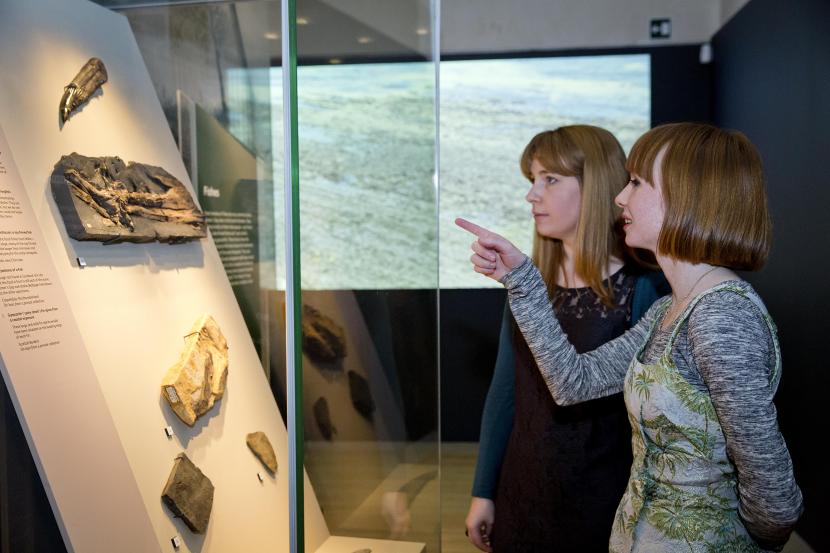
5. Scottish Fossil Code - Guidance for young collectors, teachers and families
We encourage young collectors to learn about fossils and how much they can show us about our world and the past. A curiosity about fossils is a wonderful gateway into geological and wider aspects of nature. If you are a young fossil collector, or the teacher of, or responsible adult for a young person interested in fossils and their collection, this Scottish Fossil Code - Guidance for young collectors, teachers and families interprets the Code for you and advises on how to collect fossils responsibly. Please refer to the full Scottish Fossil Code (pdf available for download below) for supporting information if needed.
Adult involvement
Adults can help young collectors learn about fossils using books and online resources. They can also help young collectors interested in fossils see and find actual fossil specimens, for example, in museums and at fossil localities around Scotland. Adults should ensure the safety of young collectors and offer advice on safe access. The Code does not cover health and safety matters and so, whenever necessary, advice should be sought about how to keep safe when looking for and collecting fossils.
Being responsible
Being outdoors and collecting fossils requires collectors to take care of themselves and the places they visit. Looking for fossils and the approaches of ‘casual’ or ‘minor’ collecting of loose fossil specimens, as outlined in the full Code, is probably not going to present a problem in many places you are likely to visit. However, you should take care when a fossil site has legal protection (see Scottish Fossil Code - Further information) and remember that a hammer should not be used on bedrock that is protected by law.
Being responsible includes only collecting a few fossils and not taking away all the fossils you may find. Over-collecting means that there won’t be any fossils left for anyone else to find.
Being a good scientist
An important part of fossil collecting is to learn about fossils and look after the fossils you find. This may include looking at guides to fossils, both in books and online, and speaking to other collectors. It also means making sure that the fossils you collect are carefully packaged and transported and then labelled and stored carefully where they cannot be damaged. It is also useful to keep a note of where a fossil was found and other details in a notebook. A labelled fossil, in a collection, can then be studied again and may be of interest and use to scientists who are experts in the study of fossils.
Telling an expert
You may find really good or unusual fossils that are important to science. Getting in touch with a fossils expert at a museum either by visiting or sending images, of fossil finds, by email is a good place to start. A museum may ask to keep a particularly rare or special fossil for study and display where everyone can see it. If the fossil is new to science, it may be named after whoever found it!
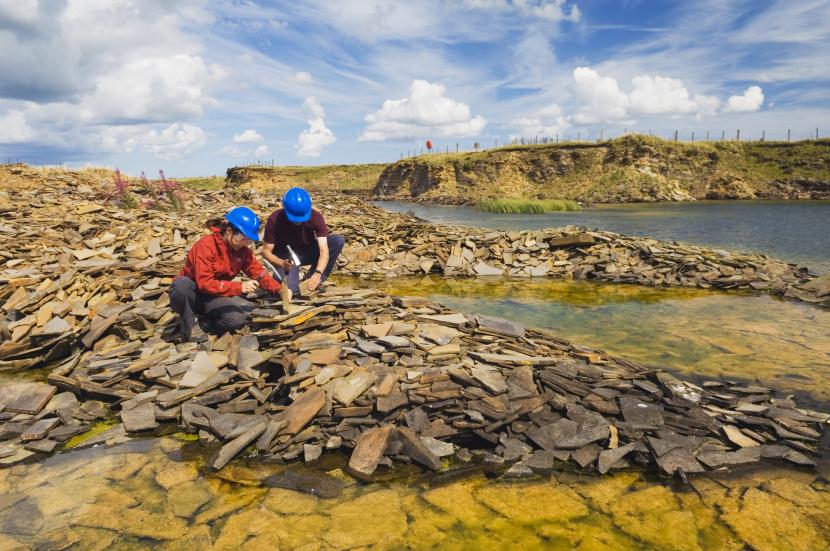
6. Essentials of the Scottish Fossil Code
Collector responsibilities:
If collecting fossils in Scotland, please do so responsibly and follow the best practice in the collection and storage of fossil specimens outlined in the Scottish Fossil Code (pdf available for download below).
Seek permission - Traditionally common fossils and small geological specimens are collected without permission and hindrance. However, lawfully the right thing to do is to obtain permission to extract, collect and retain fossils.
Access responsibly - Consult the Scottish Outdoor Access Code prior to accessing land. Be aware that there are restrictions on access and collecting at some locations protected by statute.
Collect responsibly - Exercise restraint in the amount collected and the equipment used. Be careful not to damage fossils and the fossil resource. Record details of both the location and the rocks from which fossils are collected.
Seek advice - If you find an exceptional or unusual fossil do not try to extract it; but seek advice from an expert. Also seek help to identify fossils or dispose of an old collection.
Label and look after - Collected specimens should be labelled and taken good care of.
Donate - If you are considering donating a fossil or collection choose an accredited museum, or one local to the collection area.
Owner and land manager responsibilities:
Owners of fossil localities and those that mange the land where they occur have an important role in looking after the fossil resource. Your responsibilities may include ensuring that any fossil collecting taking place on your land follows the best practice guidance set out in the Scottish Fossil Code (pdf available for download below). This is particularly the case if a fossil locality on your land has statutory protection.
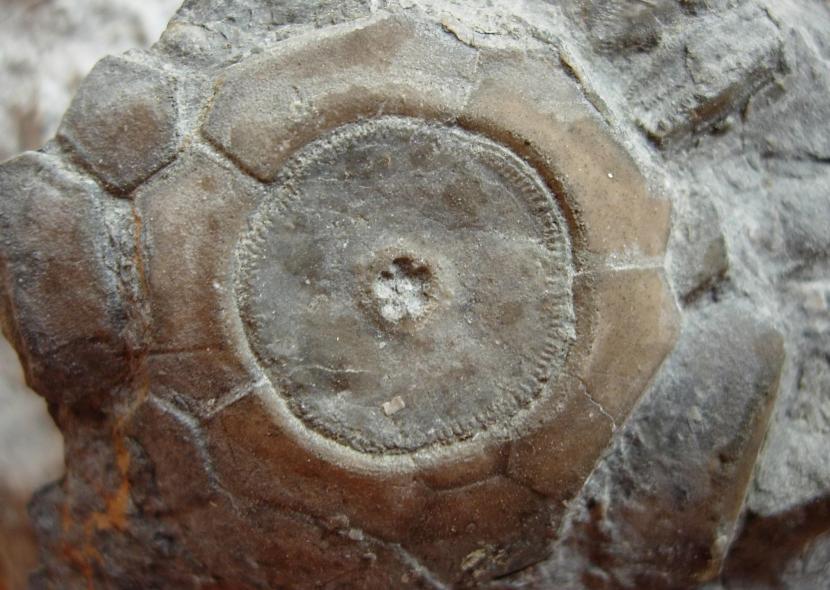
7. What to do in the event of encountering people collecting irresponsibly
If you visit fossil localities you may come across a situation where you suspect that irresponsible collecting is taking place. For example, a crow bar, sledgehammer or rock saw is being used to extract fossils from bedrock. There may also be excessive amounts of loose fossil material being removed from a locality perhaps with the use of a vehicle. If so, it may be appropriate, provided you are not putting yourself at risk, to enquire whether the person or persons has or have permission to collect fossils, and have heard of the full Scottish Fossil Code. The incident ought to be reported as soon as possible to the land owner, occupier or land manager
If you consider that the collecting may be taking place illegally or you find evidence of suspected illegal collecting having taken place, for example damage at a fossil locality that is a Site of Special Scientific Interest (SSSI), the incident should be reported to the police by telephoning 101 or reporting it online via the ‘contact us’ portal on the Police Scotland website. State that you believe a crime may have taken place and request an incident is created and titled as a ‘Wildlife Crime’. You could also report by calling Crimestoppers on 0800 555 111 where you will not be asked your name and you can leave your information anonymously. The local office of NatureScot should also be contacted.
Whether you suspect either irresponsible or illegal activity a useful action would be to note down details including the date and time of the incident, an exact location or grid reference, a description of those involved and the tools being used, and the registration number, make, model and colour of motor vehicles in the area, only do this if you can keep yourself safe. The Code says:
- "If you encounter what you consider to be irresponsible collecting, use your common sense and do not put yourself at risk by intervening. Try to inform the land manager and, if the location is an SSSI, report the incident to the police and NatureScot as a ‘Wildlife Crime’."
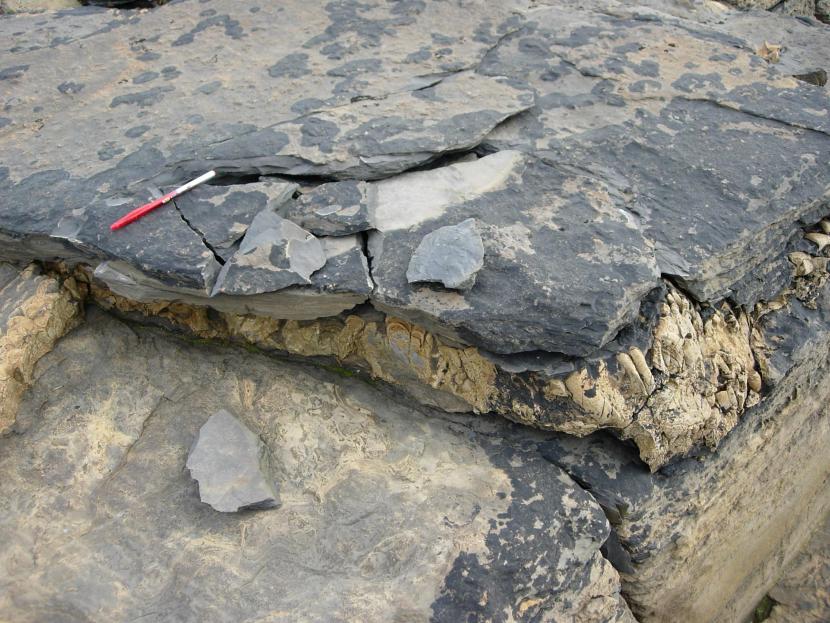
8. Scottish Fossil Code - Further information
Scotland’s rich and remarkably diverse fossil heritage can be seen and discovered in the natural environment but is also preserved and available for view in museum and other publically accessible collections. Wherever it occurs, the fossil heritage is a valuable resource used in science, education and recreation. This guide to further information supports the Code.
Want to find out about fossils?
- There are good and reputable sources of information on fossils available on the internet particularly the website of the British Geological Survey. This website provides information on what fossils are, how they form, their usefulness in geology and introduces the various fossil groups.
- The Scottish Geology Trust outlines the wide range of important fossils found in Scotland.
Keen to see some of the best fossil specimens in Scotland?
- From the Highlands and Islands to the Borders, Scotland has many museums and other institutions with collections of fossils that are available for public view. A good place to start is the National Museums of Scotland list of Scotland's Fossil Collections.
- The National Mining Museum Scotland also has fossils on public display.
Wish to know out about responsible access to the countryside and information on who owns land in Scotland?
- In Scotland, you can go on to most land to enjoy the outdoors – as long as you behave responsibly by following The Scottish Outdoor Access Code.
- The Registers of Scotland can provide assistance with finding out the ownership of particular areas of land.
Need to work out which of Scotland’s fossil localities are protected as SSSI?
- The best and most representative of Scotland’s fossil localities have statutory protection to help safeguard them from damaging activities. Information on Protected Areas, where they occur and what features are protected is available through SiteLink on NatureScot’s website.
Collecting fossils at an SSSI and need to know about the consents process?
- If you are a public body or a member of the public and you consider that the SSSI consents process applies to your proposed collecting activity, then guidance is available on NatureScot’s website.
Keen to learn more about Scotland’s geology?
- The Scottish Geology Trust is a good place to find out about Scotland’s geological heritage, including the 51 Best Places to see Scotland’s Geology and sources of further information. The website also lists events taking place across Scotland, including as part of the annual Scottish Geology Festival.
- The Scottish Geology Trust also has a teacher's page and activity packs for families
- In addition to providing useful information on fossils, the British Geological Survey website is a major source of information about Scotland’s geology.
Scottish geological societies organise events and excursion and also produce guide books, and other publications, about Scottish geology and locations that may be visited. The main societies are:
- Geological Society of Glasgow
- Edinburgh Geological Society
- Highland Geological Society
- Aberdeen Geological Society
Scotland’s UNESCO Global Geoparks and other Geoparks showcase globally important areas of geology and landscape. They all have fossil localities and can advise on where best to view the fossil heritage
Interested in getting involved in looking after and promoting Scotland’s world-class geological and fossil heritage?
There are several Geoconservation Groups in Scotland, usually affiliated to geological societies, which work with local authorities to identify Local Geodiversity Sites and promote them. Many of these volunteer-led groups prepare and provide information, including leaflets and other publications, on locally and some nationally important geological localities. They also organise events and take part in local activities. Groups include Lothian and Borders Geoconservation and Strathclyde Geoconservation.
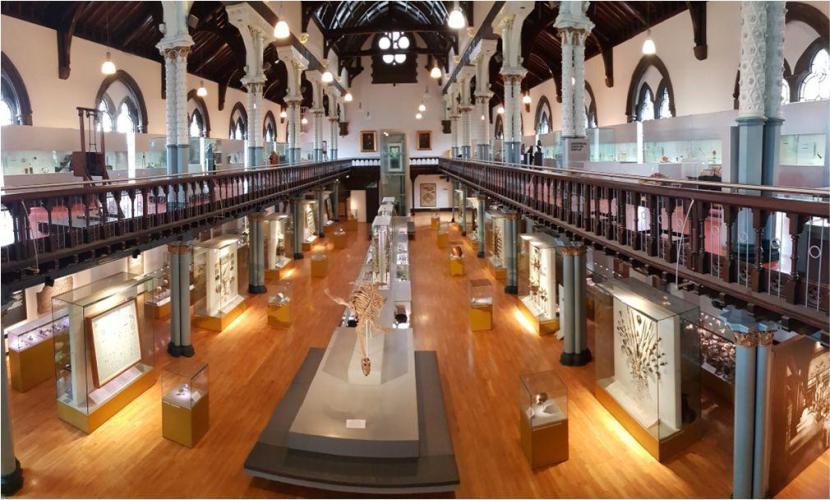
9. Contact Information
Email: [email protected]
We would like to thank all those organisations and individuals who helped us to revise the Code and prepare the associated Guidance. Acknowledgments are given in the full Scottish Fossil Code (pdf available for download below).
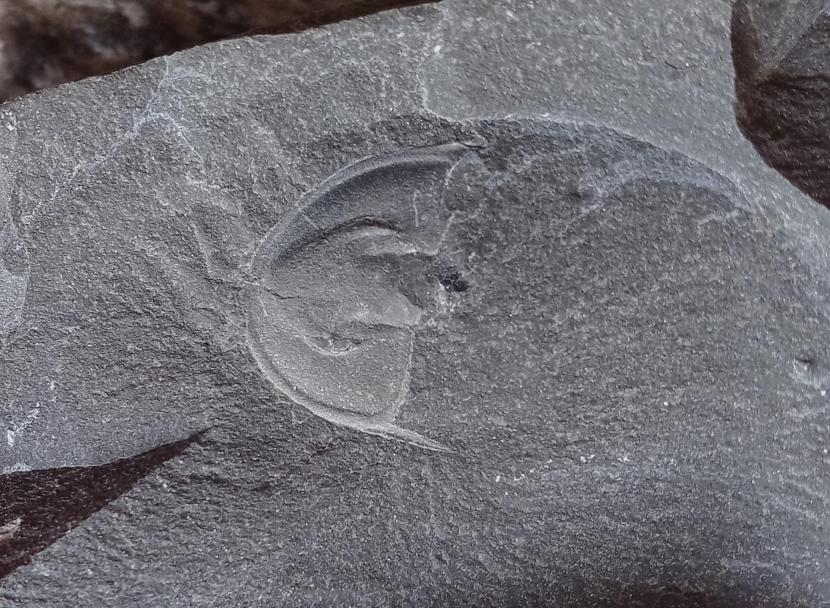
10. The Scottish Fossil Code
Download the full Scottish Fossil Code publication below. Available in a 56 page, nicely designed format. This pdf should be accessible but if you experience any problems please use our Feedback form and someone will get back to you.
Find out more
The Geological Conservation Review
Sites of Special Scientific Interest (SSSIs)
Helping to safeguard Skye's fossil heritage FAQ's
